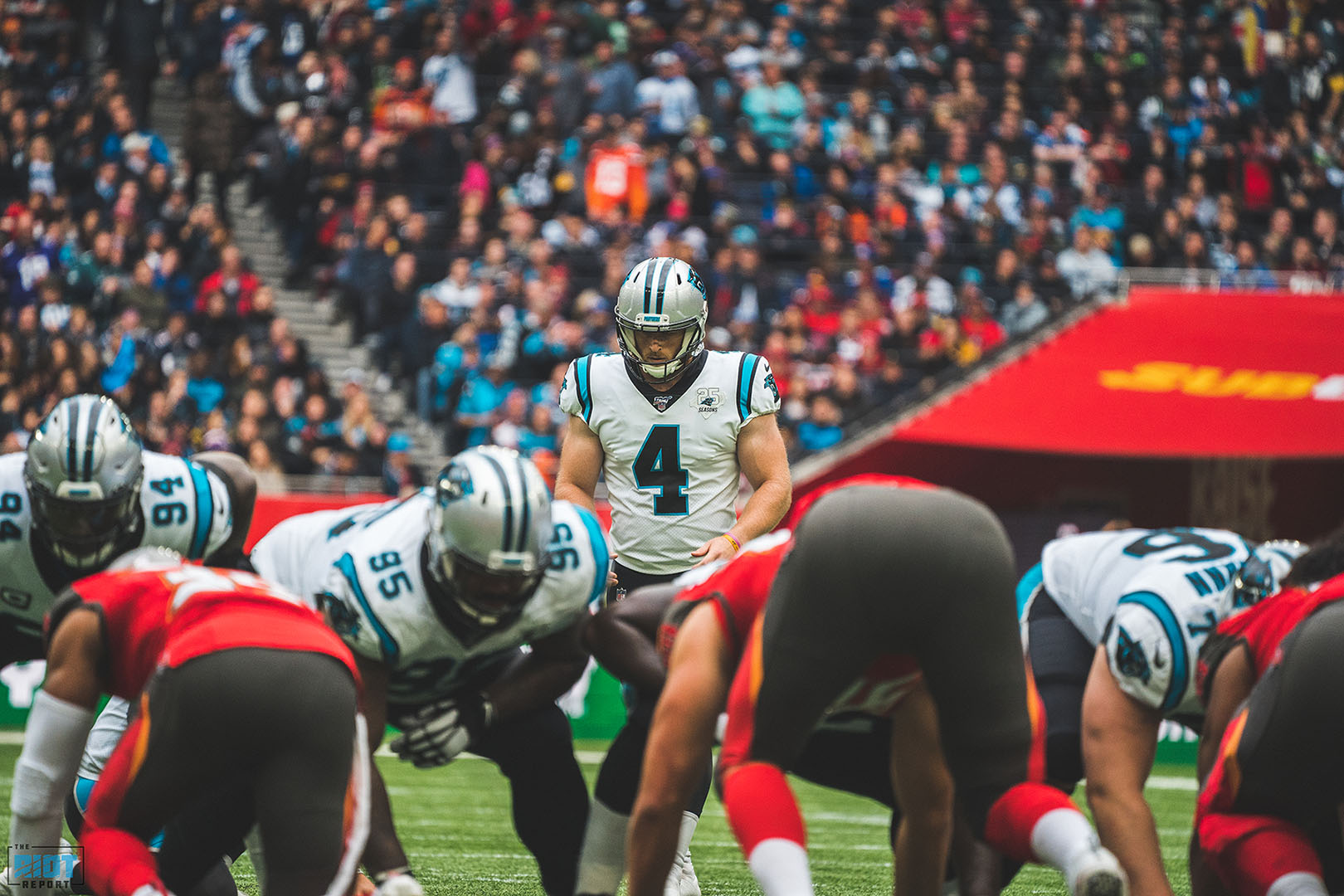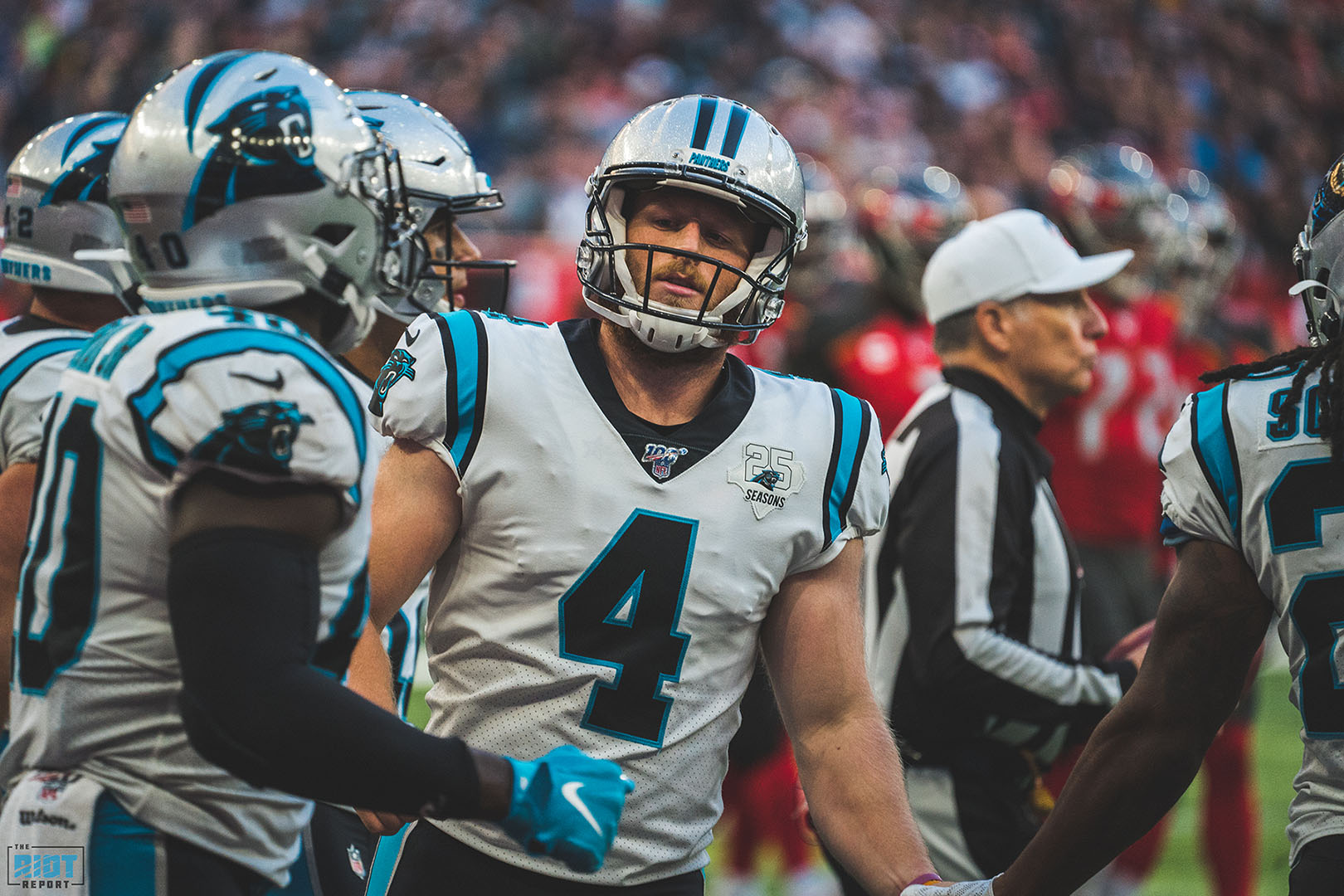The Panthers attempted to make history on Sunday when they attempted to break the record for the longest made free kick in NFL history – a record set all the way back in 1964. However, while Joey Slye absolutely had the leg to get the ball the 60 yards from the midfield line to the goalposts, his kick edged just wide to the right and Paul Hornung can rest easy for at least the time being.
With all that said, what actually happened at the end of the first half in London?
Football Rules
Like a huge amount of the NFL’s rulebook, the rule originates from rugby – though the rule it stems from has actually now been abolished in both rugby league and rugby union – it states fairly simply that if a team makes a fair catch, they are allowed to then kick from the spot of the fair catch and, if the ball goes over the posts, it counts the same as a field goal.
However, while it is a well established part of the NFL rulebook, it’s usage has been very limited, to the tune of no attempts since 2013 and only four this century. There hasn’t been a made free kick since 1976, and given that there has only been one of over 45 yards, the application of the rule is limited – but if you have a kicker who can sensibly attempt kicks from distance, the rule does hold a significant advantage for teams that are willing to use it.
Al Riveron explains the fair catch, free kick in #CARvsTB: pic.twitter.com/QNbuinAtNz
— NFL Officiating (@NFLOfficiating) October 13, 2019
Responsible Usage
The obvious advantages of a free kick as opposed to a field goal attempts is that the ball doesn’t need to be snapped backwards, which adds an extra seven yards to a kick – and because the kick is “free”, there is no attempt to block it at the line and so while the play might lead in failure, as it did for the Panthers, there is almost no risk in running the play. What this meant in practice is that rather than having to attempt a 67-yard field goal that would have a real chance of getting blocked due to the lower trajectory for longer kicks, the Panthers were able to attempt an uncontested 60 yard field goal.
Of course, this only really has relevance at the end of halves where there isn’t time to try and get the ball closer to the posts before attempting a kick, but in a situation where you get the ball knowing you are going to attempt the field goal, it makes absolute sense.

So How Did It Go Down?
Well, it all started with the punt itself, as in an unusual move based on what they have done this season, the Panthers dropped two returners back in order to allow them to cover more space. However, as Greg Olsen made it clear after the game, this was only possible due to the way in which the Bucs were backed up:
“They were worried about shanking one so we were able to put two returners back and cover more field, which I thought was really smart,” said Olsen.”
Once the Panthers got the ball on the midfield line, they knew exactly what they were going to do. Something made easier by the fact the Panthers had prepped for this very situation:
“We knew, knowing football, knowing the situation we had,” said kicker Joey Slye. “I was getting set, ready to go for a long field goal at the end of the half anyway. It looked like there was ten, fifteen seconds left on the clock when they were getting ready to punt. I was getting ready for our offense to at least get a chunk play and see if we could hit and long field goal to go into the half.”
“And then, [we] saw the opportunity then to go for a fair catch free kick.”
Rather than a lack of readiness, the possible issues had more to do with getting the rest of the Panthers players on the field aware of what was going on:
“I knew what was going to happen and JJ [Jansen] and [Special Teams Coordinator] Chase [Blackburn] reiterated it,” said Slye. “I was prepped, ready to go; it was honestly more the other guys getting them prepped ready to go.”
“Hey, we’re doing a kickoff, [but] just stand there and make sure you don’t move offsides.”
Ultimately, the kick was wide right, so Slye didn’t get the chance to secure the first successful fair catch free kick since 1976.
“I just wanted to drive through the wind and I drove straight through it so it didn’t move,” said Slye. “So if I would have had a little bit of a push from the wind I probably would have made it, but it is what it is.”
But it was fun – and confusing – while it lasted.



